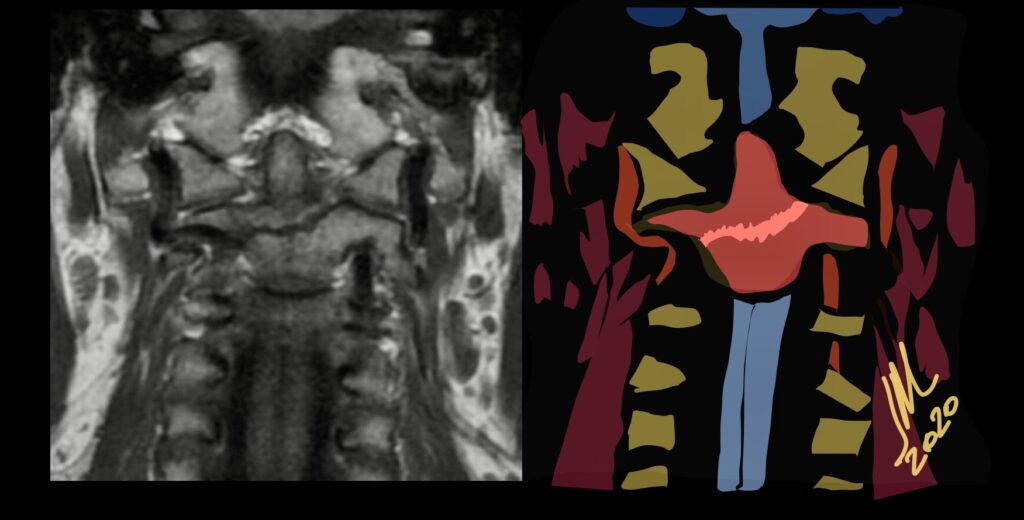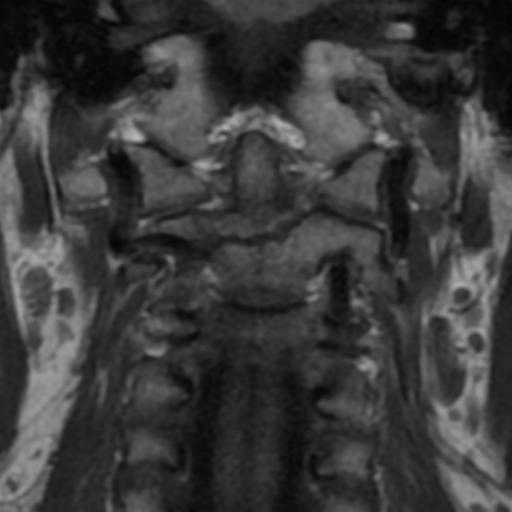
Because MR imaging and the STIR sequence are used to determine fracture acuity and, therefore, treatment recommendations, it is important that we understand the limitations of this sequence.The STIR sequence is relied on to reveal marrow edema related to an acute fracture. In addition to the increased detection of soft-tissue injury, the STIR sequence is exquisitely sensitive to bone marrow pathology. This feature may be useful in identifying the acuity of a fracture. The STIR sequence, while sensitive for the detection of acute type II-III odontoid fracture in patients younger than 50 years, is significantly less sensitive in older patients, particularly those with osteopenia. In older patients The combination of the vascular watershed and the lack of a periosteal blood supply contributes to overall poor vascularity in the odontoid, which contributes to the absence of bone marrow edema and, subsequently, the absence of STIR hyperintensity in the setting of acute fracture in the older population. Evaluating all the sequences is imperative and the combination of the t1 sequence in the coronal and sagittal plane with the stir sagittal and coronal sequence is very useful.


